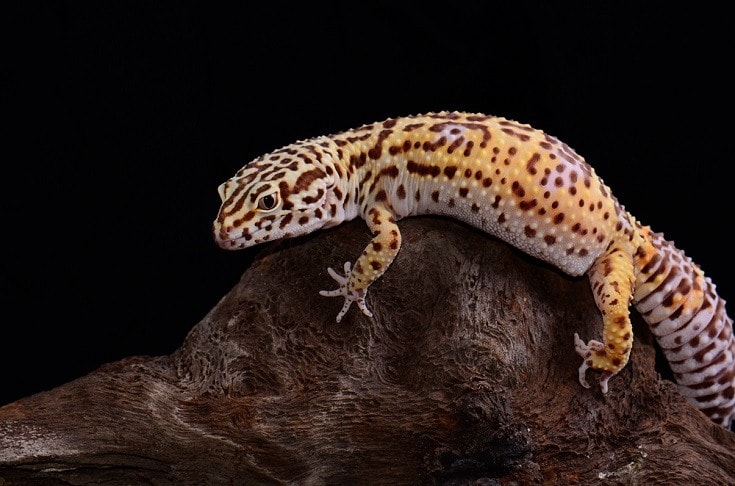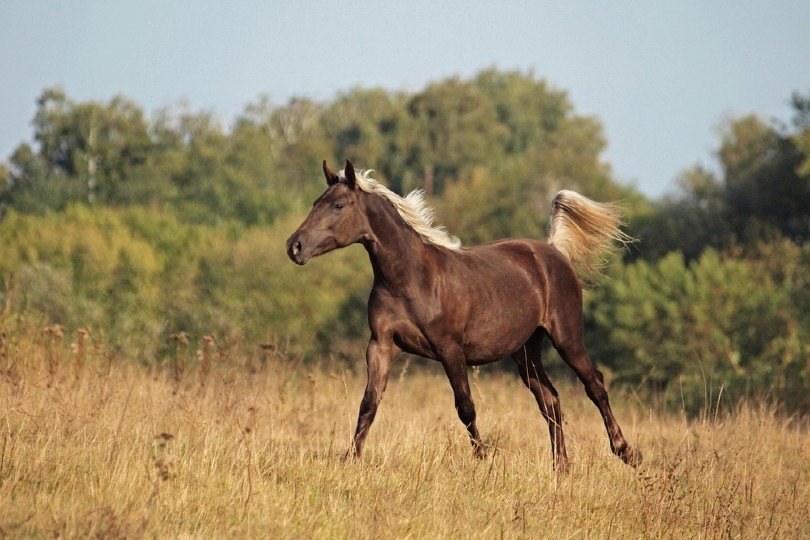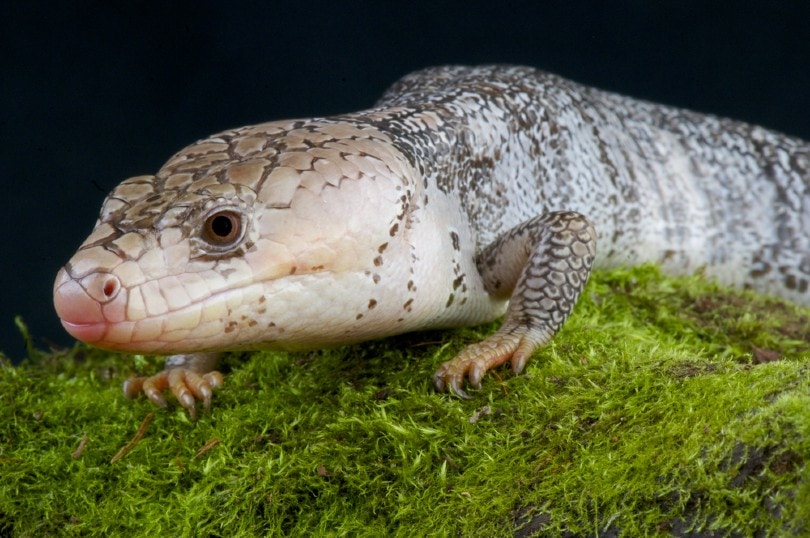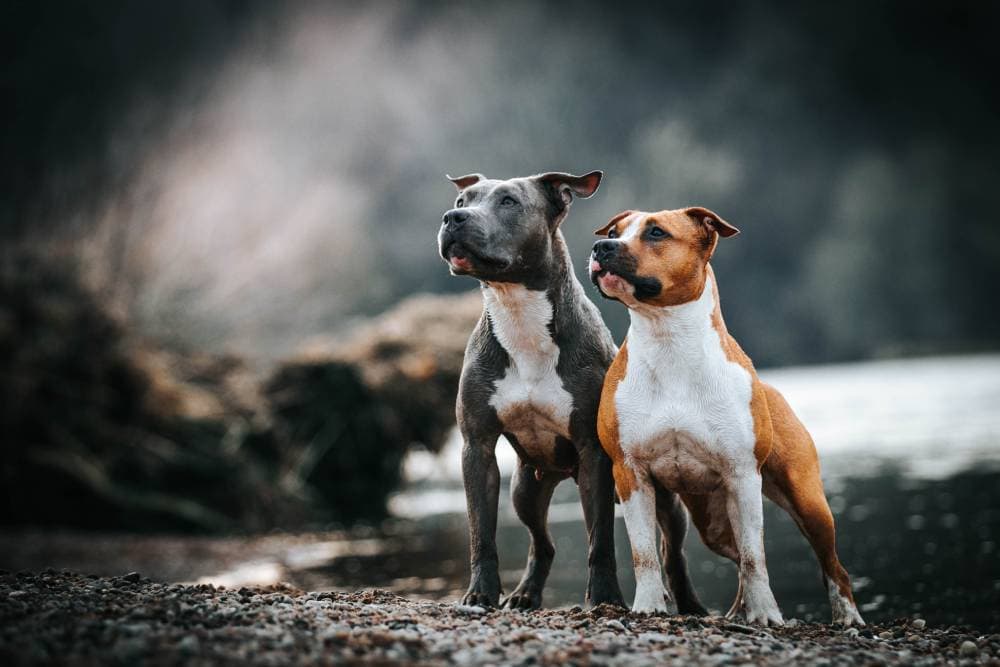Click to Skip Ahead
You may have heard that the albino leopard gecko makes a good pet, and it is a very intriguing reptile to own. However, it requires a bit more care than your average critter. In fact, it requires a very precise care regimen to thrive and stay healthy.
The albino leopard gecko is calm, agreeable, and independent, something that makes them even more appealing to many pet owners. They require minimal handling, as they become overstressed if you handle them too much.
If you’ve recently decided to purchase an albino leopard gecko, you’re probably wondering the best way to care for them. Read on while we cover every detail of caring for this lizard.

Quick Facts About Albino Leopard Geckos
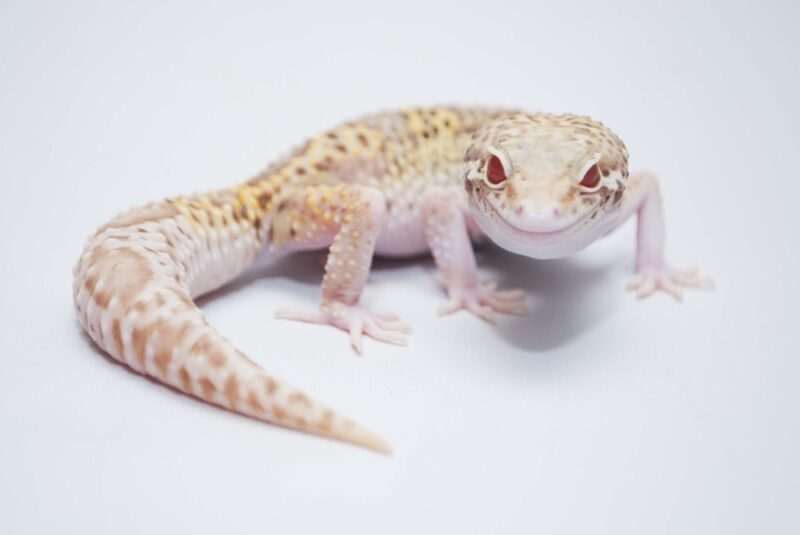
| Species Name: | Eublepharis maculrius |
| Common Name: | Albino leopard gecko |
| Care Level: | Intermediate |
| Lifespan: | 10-20 years |
| Adult Size: | 6-9 inches |
| Diet: | Butterworms, mealworms, crickets, waxworms |
| Minimum Tank Size: | 20 gallons |
| Temperature & Humidity | 75º to 95º Fahrenheit |

Do Albino Leopard Geckos Make Good Pets?
Albino leopard geckos are considered to be great pets for a beginner. Since these lizards remain pretty small and don’t like to be handled much, they’re the perfect pets for someone who doesn’t have much room and isn’t a hands-on pet person. Plus, they have a modest activity level and don’t require elaborate lighting like some pet lizards.
Appearance
The albino leopard gecko has a lack of melanin that accounts for its albino coloring. There are three types of albino leopard geckos: the tremper albino, the rainwater albino, and the bell albino. There are some crosses out there, but these are the main three and the ones that make the best pets.
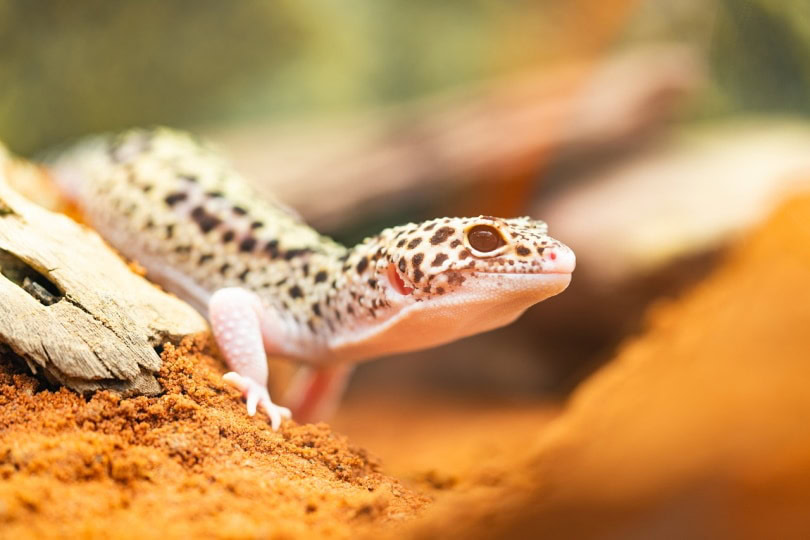

How to Take Care of an Albino Leopard Gecko
Your albino leopard gecko doesn’t require a huge tank or terrarium to live in and be comfortable. If you’re only going to be raising one gecko, then you’ll need a 20-gallon tank at least.
However, the more geckos you add to the terrarium, the more space you’re going to need. Make sure to keep the terrarium ventilated well and not too cold, but not too warm either. Keeping the terrarium too humid can end with your gecko developing respiratory problems if you aren’t careful. The same holds if it’s too dry in the tank as well.
Do not let mold form inside of the terrarium because it can make your pet very sick.
Habitat, Tank Conditions & Setup
The habitat, tank conditions, and set up guidelines for your reptile friend need to be followed in order to keep it healthy and happy. We’ll go into the specifics of each below.
Cage Size – Your albino leopard gecko needs a minimum space of 20-gallons since they don’t need much space to thrive. However, you need to add 5 gallons of space for every gecko you add to your terrarium.
Temperature Control – It’s essential to offer your gecko a cold and a warm side in its cage. The gecko will choose which side it wants to be on for its own comfort level. You may want to add a heating pad to the bottom of the tank in the winter months, just to be on the safe side. Lowering the temperature by 10 degrees at night is another way to keep your pet comfortable and healthy.
Humidity – The humidity levels in your tank should be kept between 30% to 40%. Purchase a humidity gauge to keep in the tank to judge the humidity. It helps if your home is within this range. Make sure you keep a top with a screen on top of the tank so that your pet’s cage is adequately ventilated at all times.
Substrate – There are quite a few options out there for the flooring of your reptile’s cage. The most popular options are reptile carpet, paper towels, tile, and newspaper.
Tank Recommendations
| Tank Type: | 20 gallons |
| Temperature Control: | 75º to 90º degrees Fahrenheit |
| Humidity: | 30% to 40% |
| Best Substrate: | Reptile carpet |

Feeding Your Albino Leopard Gecko
Your albino leopard gecko is an insectivore. This means it’ll only eat insects. Those insects include mealworms, silkworms, butter worms, wax worms, and Dubia roaches. Its favorite meal, however, is going to be suitable, crunchy crickets.
You should never feed your gecko insects that are caught in the wild, moths, fireflies, butterflies, or cockroaches, as it can mess with their digestion and make them extremely sick.
Until your gecko reaches 12 months of age, feed it once daily. Once it’s over a year and a healthy weight, you can feed it every other day instead, unless it’s sickly or needs to gain weight.
- Related Read: Feeding Leopard Geckos: How Much & How Often
Diet Summary
| Insects: | 100% of diet |

Keeping Your Albino Leopard Gecko Healthy
For optimal health in your albino leopard gecko, you need to have a big enough cage, feed it only certain insects, and have a warm and cold side in the cage.
Common Health Issues
Common health issues to look for in your gecko are metabolic bone disease, respiratory problems, and impaction. If you see any of these issues in your albino leopard gecko, it’s essential to contact a vet right away.
Lifespan
The lifespan of the albino leopard gecko is from 10 to 20 years. If the Gecko is taken care of properly, then you should have no problem with it living to a ripe old reptilian age.
Breeding
The gecko is one of the easiest reptiles to breed. It’s important to note that accidental breeding is bound to happen easily if you keep a female and a male in the same cage.
For breeding, you should have one single male per four females. Use a 10-gallon tank for the male and a 20- to 40-gallon tank for all the females. You’ll need a heating pad for extra warmth and to spread peat moss in their cage for a laying box. Check for eggs throughout the next week, then remove them and put them in an incubator once you have a few.

Are Albino Leopard Geckos Friendly? Our Handling Advice
Albino leopard geckos are friendly, but they don’t like to be held often. In fact, they become stressed if they’re held too often, so make sure to keep the touching to a minimum. They are gentle creatures, so you should have no problems with them.
Shedding: What to Expect
All reptiles shed their skin; it’s how they grow. However, they don’t shed in one piece like snakes do, but in a peeling sunburn fashion. The gecko pulls the skin off their body and eats it as a way to get added nutrients. The skin comes away in paper-like strips.
Make sure to keep an eye out for shedding problems with your gecko as well. Not shedding properly can lead to death for your poor pet. If you feel that your gecko isn’t shedding the way it should, make an appointment with a vet that takes care of reptiles right away for treatment.

How Much Do Albino Leopard Geckos Cost?
One of the biggest benefits of owning an albino leopard gecko is that they aren’t that expensive to purchase or take care of. Purchasing one from a breeder or the local pet shop will run you around $50 minimum.
With the cage and all of the components, you need to make sure your gecko’s cage is comfortable and healthy where it can thrive. It’s going to cost you around $250 to start, and then the upkeep after that.
Albino Leopard Gecko Pros & Cons
- Docile nature
- Not very expensive
- Simple diet
- Requires multi-temperature habitat
- Gets stressed if overhandled
- Territorial with other males

Final Thoughts
These are the basics you need to know if you plan to take care of your albino leopard gecko as a new pet owner. Remember, these are docile and gentle creatures, but they don’t like to be held for long periods of time. Take care of them properly, and your gecko can be a worthy pet for many years to come.
- See Also: Do Leopard Geckos Pee? Tips, Signs & FAQ
Featured Image Credit: cowboy54, Shutterstock
